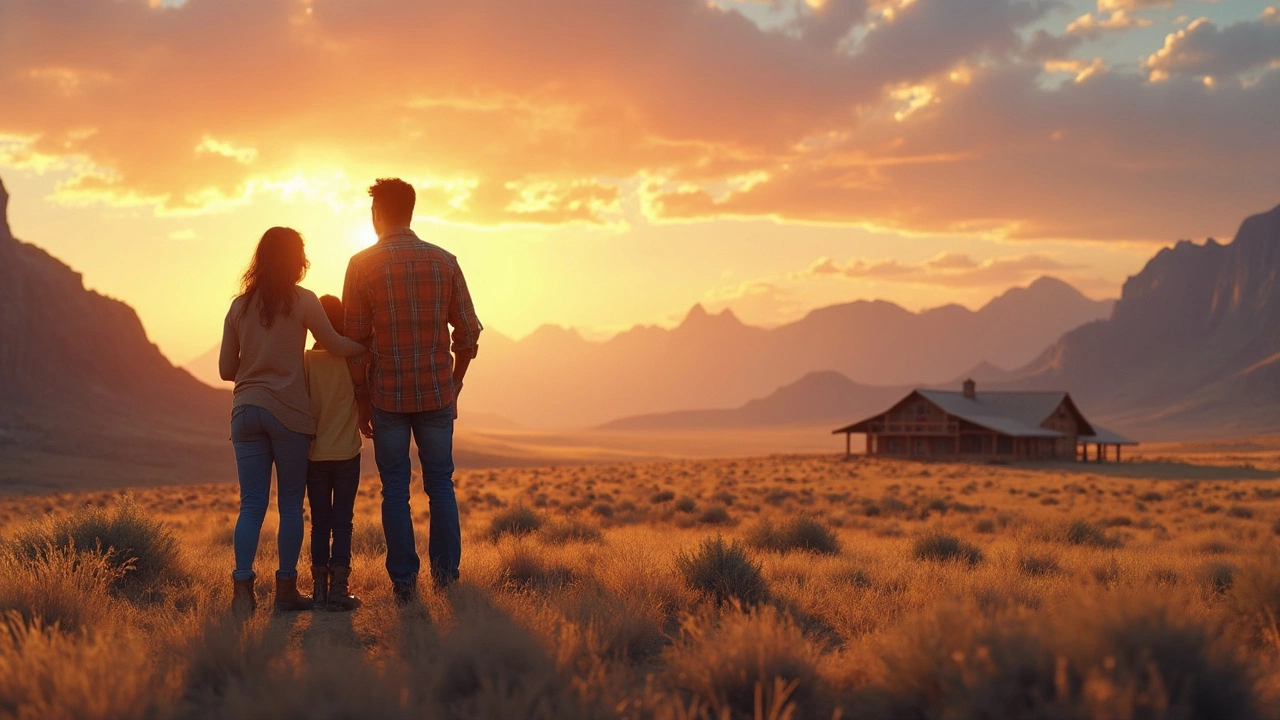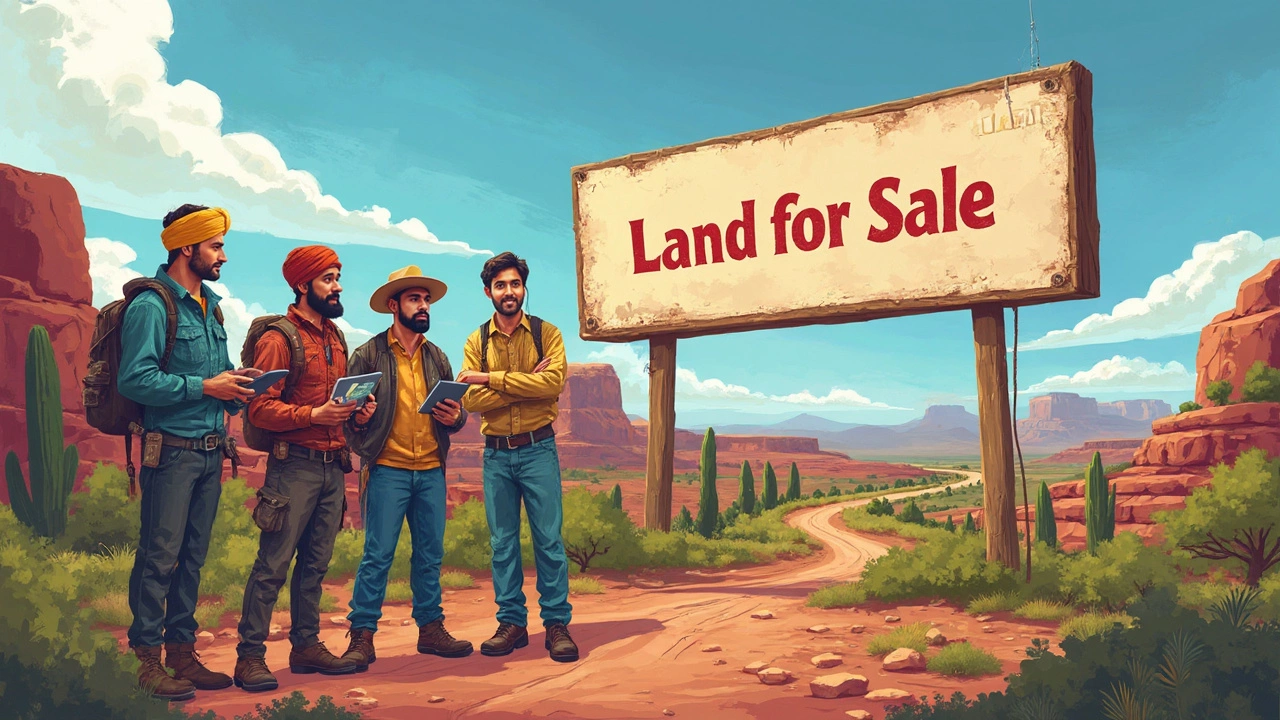Utah #1 for Land for Sale: What Makes This State Stand Out?

Utah is topping the charts for land sales, and it’s not just hype. The state has a winning mix of affordable prices, crazy-diverse landscapes, and solid growth. People from states like California and Colorado are scooping up land in Utah—a little for the outdoors, a lot for the investment.
You’ll find everything from dirt-cheap desert parcels (perfect if you want elbow room) to mountain acreage steps away from world-class skiing. Buyers come looking for a simple camping spot, a future building site, or the next big real estate play. The numbers don’t lie: land sales in Utah hit record highs for volume and price per acre in the last year, according to multiple reputable real estate data sources.
So if you’re eyeing land for a getaway, a home, or even a long-term flip, Utah is full of options—especially compared to many other western states where open space is getting snapped up fast. No need to wade through a ton of red tape either; Utah is known for being friendly to buyers and easy to deal with on permits and zoning. Stick around to learn what makes Utah #1, and what you need to know before buying your own piece of it.
- Why Utah Ranks #1 in Land for Sale
- Popular Types of Land Available
- Hotspots: Where the Deals Are
- Tips for Buying Utah Land
- What the Future Holds for Utah Landowners
Why Utah Ranks #1 in Land for Sale
Utah leads the nation for land sales for some pretty clear reasons—affordability, growth, and variety. If you compare acres for your dollar, Utah almost always gives you more than other western states. The state’s median land price is hundreds or even thousands lower per acre compared to places like California or Colorado.
The variety is wild. You've got red rock canyons, mountain valleys, and endless desert. It’s a gold mine for people looking for anything from hobby farms to short-term rental cabins, off-the-grid retreats, or even commercial development land.
- Utah has one of the lowest property tax rates in the entire U.S—about 0.6% on average, according to the Tax Foundation. That saves owners a lot of money every single year.
- Public lands cover over two-thirds of Utah, opening up access to outdoor adventures like hiking, ATV riding, or skiing—huge perks for buyers wanting land with recreational potential.
- The state’s population grew by about 1.5% last year, outpacing the national average—so demand keeps climbing, pushing land values up.
- Utah’s permitting and zoning rules are generally straightforward and less restrictive than in many other states.
The job market deserves a shoutout, too. More tech firms and remote workers mean communities are growing, not shrinking. This keeps the state buzzing with new opportunities, especially in towns like St. George and Moab—their land markets are hot because people want a piece of the action.
Here’s a quick look at how Utah stacks up for key metrics compared to neighboring states:
| State | Median Land Price (per acre, 2024) | Avg. Property Tax Rate (%) | Population Growth Rate (2024) |
|---|---|---|---|
| Utah | $4,800 | 0.6 | 1.5 |
| Colorado | $7,300 | 0.5 | 1.1 |
| Nevada | $6,100 | 0.6 | 1.3 |
| Arizona | $5,500 | 0.7 | 1.2 |
| California | $10,200 | 0.8 | 0.5 |
You can see the advantage—Utah gives buyers more flexibility and better deals across the board. If you’re looking at land for sale, this state definitely deserves a spot at the top of your list.
Popular Types of Land Available
Utah isn’t a one-size-fits-all state—there’s a crazy variety of Utah land for sale, and you can actually pick what fits your life or business needs. Here’s a look at what’s out there right now.
- Residential Lots: Loads of folks come looking for land to build homes, tiny cabins, or Airbnbs. Utah’s counties like Wasatch and Utah County have a ton of lots in planned communities, especially near ski resorts and lakes.
- Agricultural Land: You want to run horses or try your hand at farming? Rural counties like Sanpete and Millard serve up giant stretches of flat, fertile farmland with water rights. These spots are solid for both big and small operations.
- Recreational and Off-Grid Parcels: People love Utah for its freedom—remote desert land in places like Duchesne or San Juan County is super popular for camping, hunting, and living off the grid. These are the affordable places where you can just ‘disappear’ for the weekend.
- Commercial and Industrial Sites: If you’re eyeing a business, parts of Salt Lake, Davis, and Weber counties have commercial land zoned for warehouses, offices, or retail. Utah’s pro-business climate makes it easier to launch.
- Ranch and Recreational Acreage: Massive acreage—think 40 acres or more—really shines in southern Utah. These lots attract everyone from ranchers to families setting up second-homes.
Just so you get the real picture, here’s a snapshot of current average prices per acre across a few different land types, based on 2024 market data:
| Type of Land | Average Price per Acre | Notable Counties |
|---|---|---|
| Residential/Lots | $60,000 | Utah, Wasatch, Summit |
| Agricultural/Farmland | $8,500 | Sanpete, Millard, Cache |
| Recreational/Off-Grid | $3,000 | Duchesne, San Juan, Emery |
| Commercial/Industrial | $90,000+ | Salt Lake, Davis, Weber |
| Ranch Larger Parcels | $2,500 | Iron, Garfield, Wayne |
This spread means there’s a match for nearly every budget and goal. Keep in mind: Different counties have their own zoning rules and restrictions, so double check that your dream project lines up with what’s allowed before you sign anything. If you want land to build or just room to roam, Utah’s got you covered.

Hotspots: Where the Deals Are
When it comes to snagging Utah land that actually fits your needs (and your wallet), you need to know where to look. Not all land in Utah is created equal—some areas are seeing wild price jumps, while others are full of hidden gems.
If you’re hunting for a smart investment or just a private getaway spot, here are a few places that should be on your radar:
- Southern Utah: Places like Iron, Washington, and Kane counties are a goldmine for open land. People love these areas for access to Zion, Bryce Canyon, and all kinds of outdoor adventure. You can still grab a small desert parcel for under $10,000 if you act fast.
- Uintah Basin (Vernal area): This northeast corner isn’t just about oil and gas—land prices are lower, and you get hunting, fishing, and off-roading out your back door. It’s perfect for folks looking for acreage without breaking the bank.
- Sanpete and Sevier Counties: These central hotspots offer valleys and foothills, and the word is definitely out. Land gets snatched quick, but you still see deals on lots for cabins and farming.
- Duchesne County: If you’re dreaming of wide-open space, this is it. Some of the most affordable acreage in the whole state is here—think $3,000 to $5,000 per acre for basic lots.
- Utah County (outskirts): If you want to stay near jobs but can’t swing Salt Lake prices, look to the edges of Utah County, like Eagle Mountain or Elberta. Plots are going up in value but are still less than urban areas.
For a little real-world context, check out this quick comparison of recent land prices by county:
| County | Average Price per Acre (2024) | Main Draw |
|---|---|---|
| Duchesne | $4,000 | Space, affordability |
| Iron | $7,500 | Proximity to parks, recreation |
| Sanpete | $8,800 | Cabin sites, scenic valleys |
| Utah (Eagle Mountain) | $15,000 | Close to tech jobs, schools |
| Washington (rural areas) | $12,500 | Near St. George, resorts |
Takeaway: Rural counties are where the deals live, but even close to bigger cities, land is still cheaper than most other western states. Move quickly if you see something that fits—inventory goes fast, especially as Utah’s popularity keeps rising. Don’t just focus on price. Double check zoning, water rights, and access before making your move.
Tips for Buying Utah Land
Jumping into the Utah land for sale market isn’t just about picking your favorite view. Here’s what you need to know before you put your money down.
- Don’t skip the zoning check. Utah counties can have wildly different rules. Some parcels are zoned for farming only, others might let you build homes or even cabins. Before you get too excited, call the county planning office and ask for the parcel’s zoning details. This quick call saves you from future headaches.
- Water’s a big deal. Utah’s dry climate means water rights matter—a lot. Not all land comes with them, and drilling a well isn’t always allowed. Double-check if a parcel has existing water rights or if there’s nearby access. You can look up water rights for any land using the Utah Division of Water Rights database.
- Road access is not a given. People sometimes sell land you can’t legally get to because there’s no recorded road easement. If you want to drive up to your property, make sure there’s public road access or a legal private road easement in place. Don’t just take the seller’s word—ask for it in writing.
- Survey before you buy. Boundaries in Utah can be fuzzy, especially with older rural parcels. Ask for a recent survey. If the seller can’t give you one, consider paying for a survey yourself. It tells you exactly where your land starts and ends, which helps avoid disputes with neighbors down the line.
- Watch for land scams. Utah’s popularity has brought out the scammers, especially in rural online listings. Look up the actual county records before wiring money, and make sure the seller really owns what they’re selling. If a deal looks too good, slow down and double-check everything.
If you’re unsure, work with a local real estate agent who knows the Utah market inside out. They can point you toward good parcels, help with paperwork, and flag any red flags. There’s no need to guess your way through this—Utah’s got a lot to offer if you buy smart.

What the Future Holds for Utah Landowners
If you own or are thinking about buying land in Utah, there’s a lot to be optimistic about. The state’s population is expected to grow about 2% each year through at least 2030, according to the Kem C. Gardner Policy Institute at the University of Utah. That means more folks looking for housing, businesses, and recreation, all driving demand for raw land.
The tech sector is booming, especially along the Wasatch Front. More startups and big companies mean more jobs, and that attracts people. Land within easy reach of Salt Lake City, Provo, and Ogden is especially hot. If you’re sitting on a plot near those spots, its value could rise faster than the state average. A report from LandWatch pegged Utah as "one of the fastest-growing states for land value" in the Mountain West for 2024.
But it’s not just about flipping property for a quick buck. There’s a real push for outdoor tourism and recreation, and the state welcomes people building cabins, campgrounds, and adventure-based businesses. With investors and families both looking to escape the big city sprawl, lots out by Moab, St. George, and Bear Lake have seen a steady uptick in interest over the last five years.
"Utah’s mix of open space and growth-friendly policies puts it in a unique position," says Julie Wood, a real estate economist with Utah Land Resource Group. "We’re seeing land buyers come from out of state as well as locals who want a piece of the action or a weekend escape."
Don’t ignore the infrastructure updates either. Utah is constantly expanding highways, fiber internet, and utilities into new areas. Land that seems out there today might be next year’s hot spot as access gets better.
- Prices are likely to keep trending up, but at a manageable pace compared to places like Colorado and California.
- There’s still plenty of land available in rural areas, but prime spots near highways or lakes get snapped up quicker these days.
- If you’re buying, keep an eye on zoning updates and development plans, especially around the Salt Lake Valley and southern resort areas.
All in all, Utah landowners are sitting pretty. Whether you’re holding for the long game or jumping into a building project now, the outlook looks solid if you pick your spot with a little homework.




Write a comment